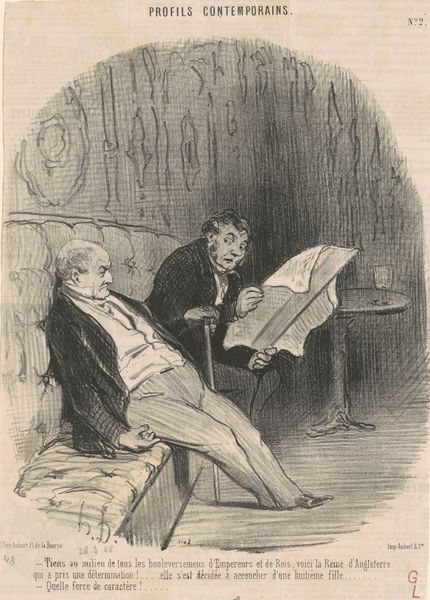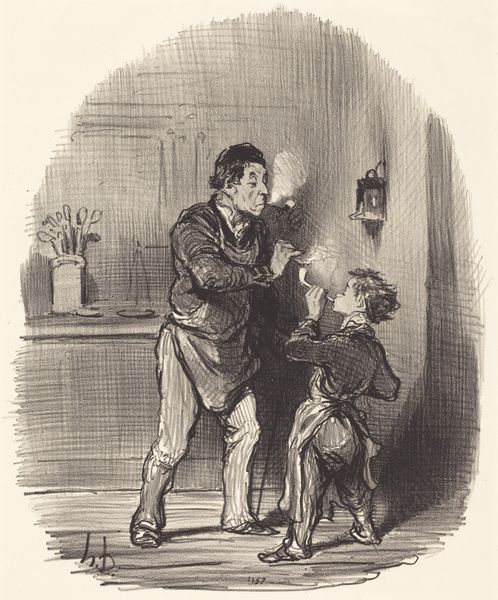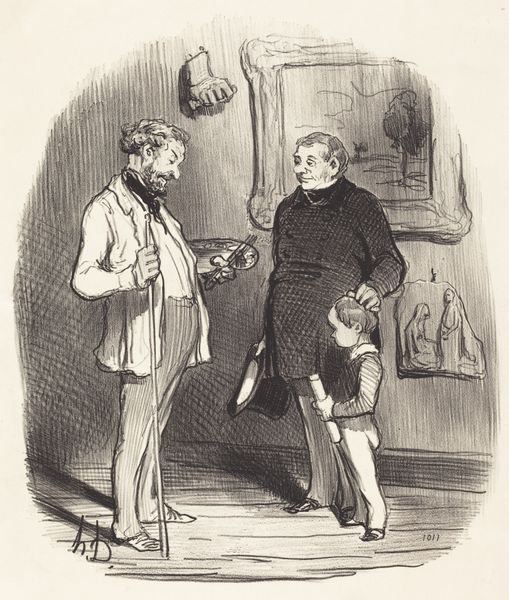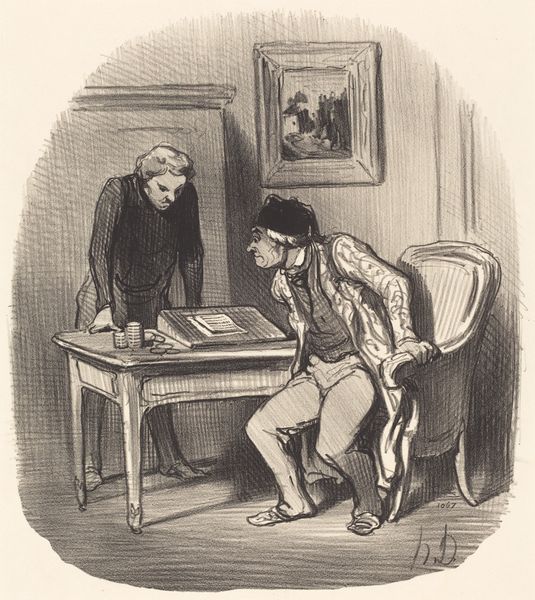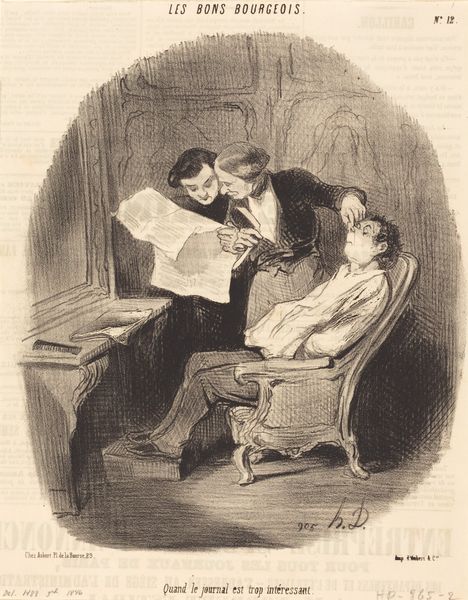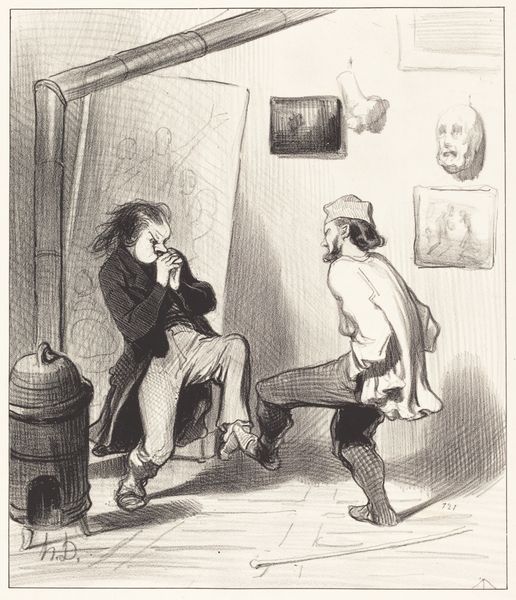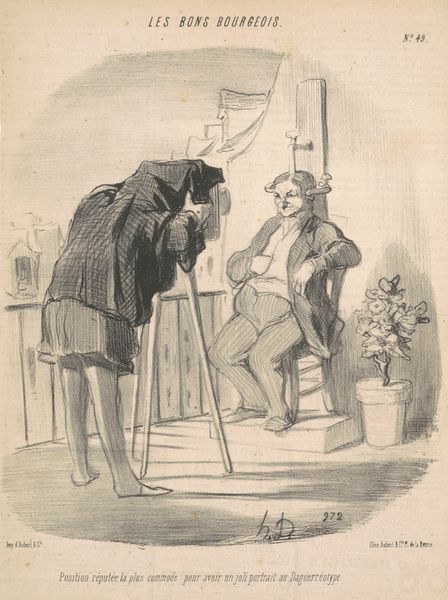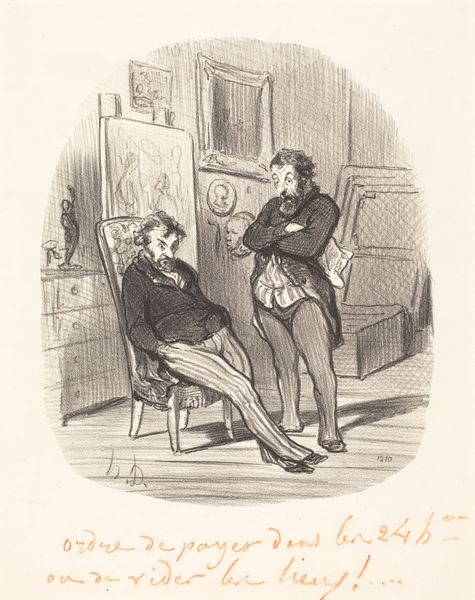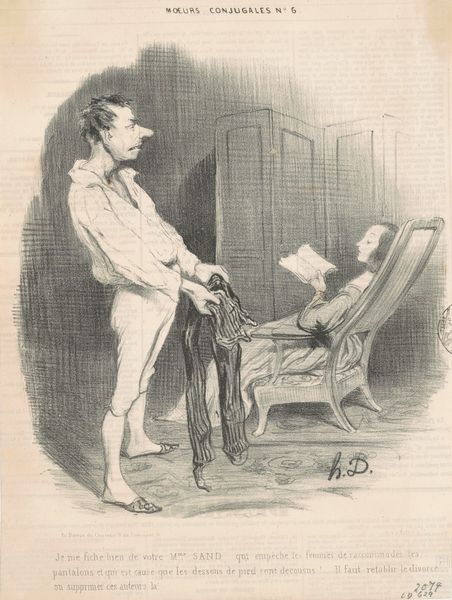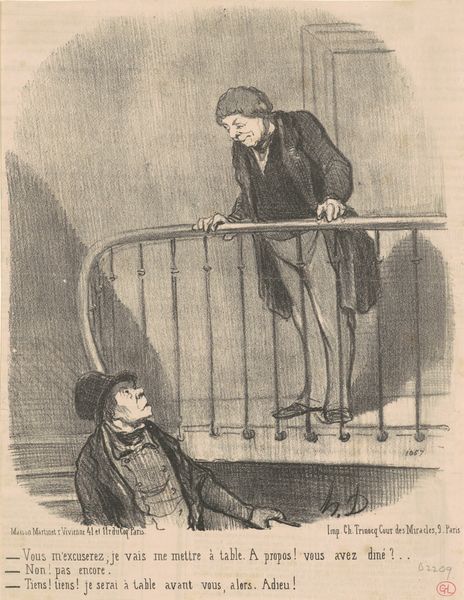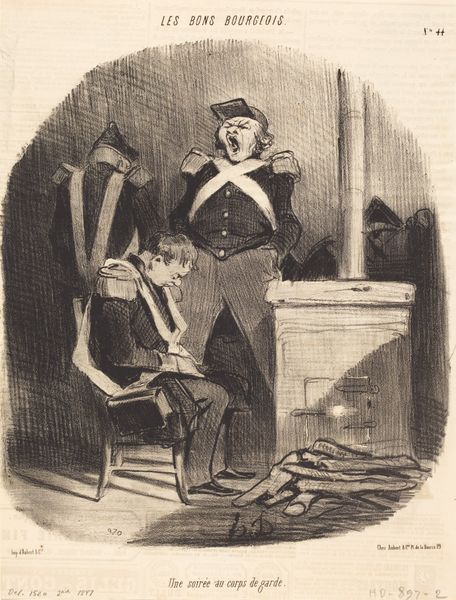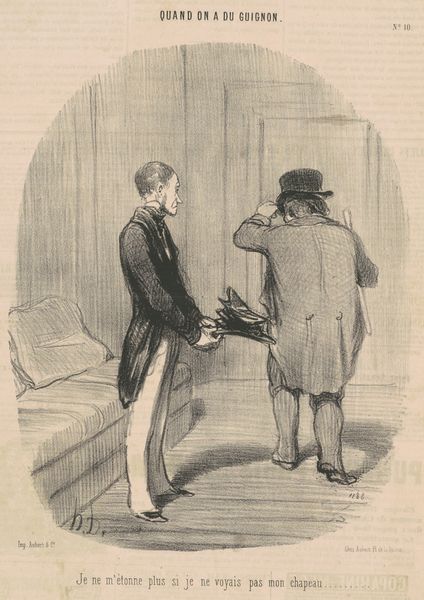
Oui, Mossieu Fremouillet, tout va de mal en pis ... c. 19th century
0:00
0:00
lithograph, print
#
portrait
#
lithograph
# print
#
caricature
#
figuration
#
romanticism
#
genre-painting
#
history-painting
Copyright: National Gallery of Art: CC0 1.0
Editor: This is "Oui, Mossieu Frémouillet, tout va de mal en pis..." a lithograph by Honoré Daumier, from around the 19th century. The men in this print have a wonderful quality of resigned cynicism. What catches your eye? Curator: Oh, Daumier always gets a rise out of me. It's more than just cynicism, wouldn’t you say? It's like a tragicomic opera distilled into a single scene. These "good bourgeois," as the title suggests, are trapped in their little dramas. Notice the hanging hat, stranded high above – a forgotten ambition, perhaps? Daumier had a real knack for turning the ordinary into something laced with gentle mockery. It almost feels… well, personally relevant! What about you? Anything stir within *your* soul when you consider their situation? Editor: I see the pathos, definitely. They're figures we recognize. So, what’s Daumier trying to tell us about the bourgeoisie here? Curator: I think he’s holding up a mirror, smudged though it may be. This was post-revolution France, after all. There was political volatility and economic instability, so he's both satirizing and documenting their disillusionment. But even further: isn't it interesting how such anxieties and concerns are echoed into our contemporary moment? How art created then speaks so profoundly into what many are concerned about, or coping with, today. What do you think—is he criticizing them or empathizing with them, maybe a little bit of both? Editor: It's that combination that makes it so effective, I think. It’s a funny, poignant snapshot. I suppose everyone feels the world's going downhill eventually. Curator: Precisely. Daumier helps us find solidarity—even humor—in that universal sentiment. Which, in the end, is really not all that bad.
Comments
No comments
Be the first to comment and join the conversation on the ultimate creative platform.
